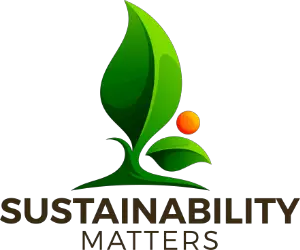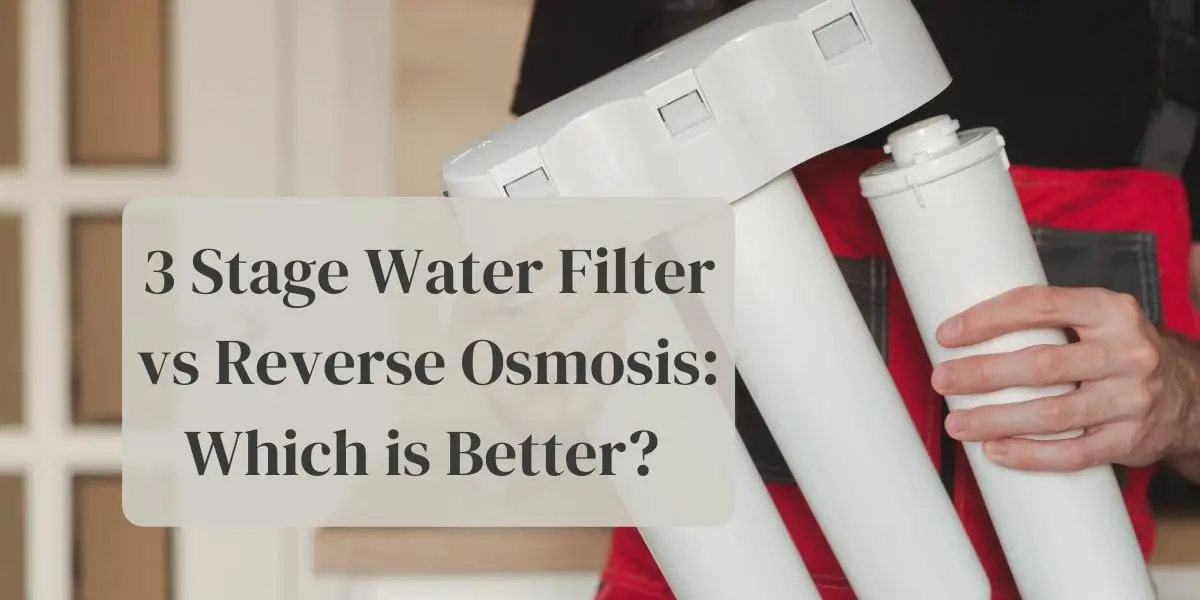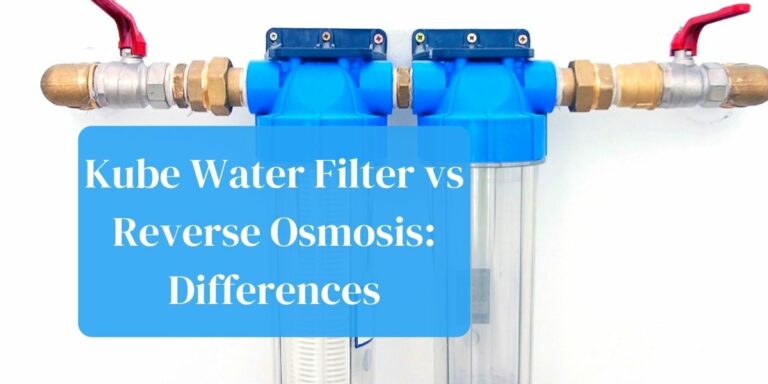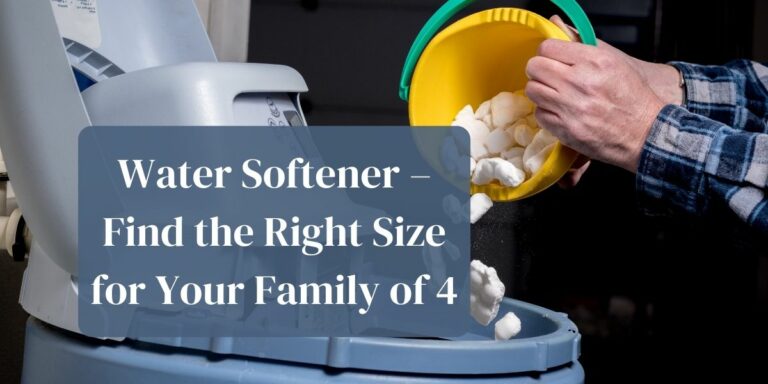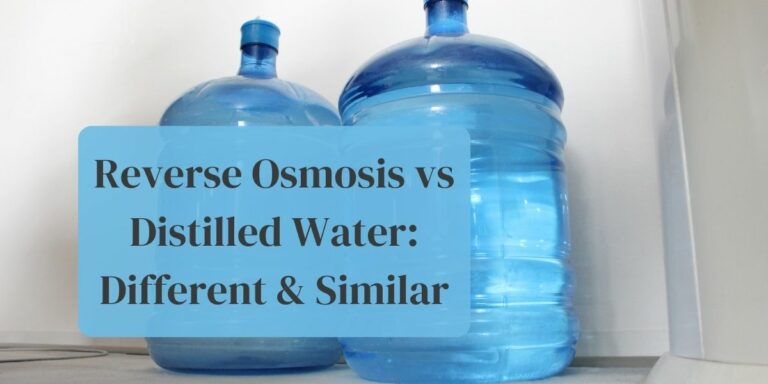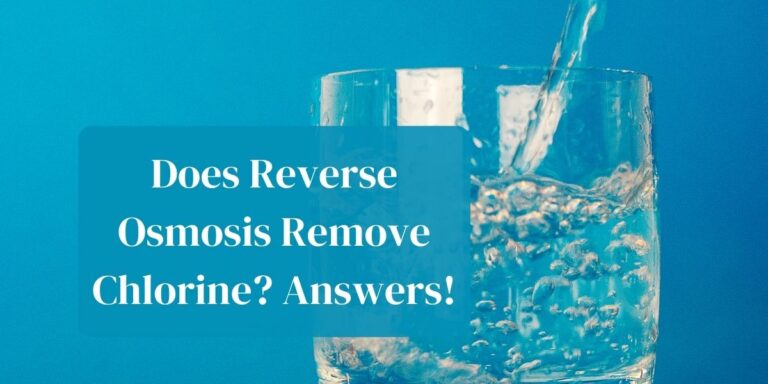Reverse osmosis technology is a method used to provide high-quality water by forcing it through a semi-permeable membrane to filter out dissolved solids and impurities. Due to its efficiency, it has a wide application in areas where high quality water is essential.
It includes product rinsing, biotechnology, boiler feed water filters, and other processes that needs well-purified drinking water for domestic or commercial use. This will significantly reduce any possible health hazards resulting from ingesting unclean water.
But is there a difference between a 3 stage water filter vs reverse osmosis? Let’s find out.
The desalination of seawater using a semipermeable membrane was carried out successfully, and pure water obtained although the flux was too low to be commercially viable.
However, due to its viability to effectively filter drinking water, there have been continuous efforts to develop the techniques to what is currently the commercial reverse osmosis method.
Table of Contents
- Reverse Osmosis Systems
- 3 Stage Water Filter Vs Reverse Osmosis Filters
- Is Reverse Osmosis Water Bad for You?
Reverse Osmosis Systems
Cons
- The process is expensive and with a slow output.
- For each gallon of water purified, about 2-20 gallons go to waste.
- The installation process is expensive.
- The reverse osmosis (RO) membranes require replacement frequently to continue giving quality output.
- Hard water shortens the lifespan of the RO membrane
3 Stage Water Filter Vs Reverse Osmosis Filters
Which is better reverse osmosis vs filtration? Reverse osmosis will provide you with clean water, which is essential for drinking.
Reverse osmosis systems
Even though there are several sources of pure water comparing it to water filtration, there are remarkable benefits of reverse osmosis which include:
- It has the ability to filter and remove total dissolved solids, get high quality water with good taste and odor is one of the main benefits of reverse osmosis systems.
- It doesn’t add any chemical; instead, it filters dissolved substances.
- However, several cons make it difficult to use reverse osmosis system for purification at home sometimes
Effective at removing sodium
If your water is from a salty source, it is likely to be loaded with salts such as sodium. Unlike water filtration system, the reverse process will take care of that by removing sodium contained at unsafe levels. You can enjoy the pure drinking water with your family or for your freshwater fish.
Effective at removing lead
Virtually, everyone convinces their mind that the tap water is free from heavy metals; unfortunately, the water is likely to contain the metals released from the old infrastructure conveying it to your place.
Mostly such water contains lead which is lethal to brain development. Therefore, unlike filtration systems, reverse osmosis will purify water with lead contents to safe levels. Additionally, reverse osmosis removes a large percentage of other heavy metals found in tap water, including iron, mercury, copper, and nickel.
Protection from microorganisms
Since it is equipped with tight pores, the reverse osmosis membrane allows no parasites, some of which are the culprits for a significant number of gastrointestinal problems. It also purifies the water from a wide range of germs and viruses.
Softens the water
The reverse osmosis membrane removes not only sodium but also other minerals, thus softening the water. Therefore, the water won’t leave residue on your appliances, including a fish tank, kettle, sink, and faucet.
You won’t need more soap and detergents while doing your laundry, unlike when you are using hard water from the other water purification methods.
Therefore, in comparison with filtration system, reverse osmosis method carries the day due to its significant number of advantages in purifying the drinking water and making it safe for human consumption.
What is a 3 Stage Water Filter?
A 3 stage water filter is a superior filtration system to obtain high-quality water. Typically, water from various sources will contain organic compounds, pesticides, herbicides, parasite cysts, hormones, and heavy metals, including mercury.
However, this process will reduce these contaminants, significantly protecting you from taking chemicals that would otherwise be vital to your health.
Stage 1
Filtration- the water filters through a carbon filter with activated carbon to remove chlorine. Sediments are also wiped out.
Stage 2
The purification stage- it involves purification of water by pushing it through a fine carbon filter that is designed to wipe out virtually all contaminants, including fluoride, mercury, lead, and other total dissolved solids.
Stage 3
The water goes through another activated carbon filter that purifies the water doing away with a great percentage of all the contaminants.
With it, you can see when the water filter needs replacement since it is made of a transparent casing . Also, the flow rate for clean water is fast. Unlike reverse osmosis method, water passes through the filters, and within no time, you have high-quality drinking water for your family.
A single filter can serve you for six months or more, making it a cost-effective way of providing clean water to your household. This way, you can prolong your home appliances’ lifespan, including washing machines since soft water leaves no deposits on them. However, you must change the filters regularly to get high quality output.
Water filtration involves the use of carbon filters where it runs through. As water filters through the carbon filter, contaminants such as chlorine and iodine are removed since they bond with carbon. It also reduces taste and odor in water.
It is applicable in appliances like refrigerators and water-cooling systems. Reverse osmosis makes use of carbon filters to separate the water molecules from the impurities by forcing it through a semi-permeable membrane.
It is a process involving several stages whereby each stage has a role to play in ensuring high-quality water.
The two methods vary in some ways, although they all serve to provide adequate clean water for your home. However, there are a few differences.
Filtration capability
Firstly, water filtration only removes a small number of impurities from the water. Depending on the rating of the carbon filter used, the filtration method removes about 85% of impurities in water. However, the reverse osmosis can filter even the small size contaminants in water with a difference of about 500 times between what the filtration process can filter and what reverse osmosis removes.
Noting that the size of the pores in the reverse osmosis membrane are tiny, they can remove a variety of water contaminants, unlike the water filtration method.
Whereas carbon filters can be formulated to purify some contaminants, including lead and arsenic, reverse osmosis will take care of that in a more effective way. It filters out even fluoride, which would be hard to do through the filtration process.
Using 3 stage filters and reverse osmosis together
Water filtration is an excellent way to remove bad taste and odor in water and filter large particles, while reverse osmosis filter virtually everything from your water. However, it works best if you filter the large particles first to prevent any premature fouling of the membrane, which would otherwise reduce the quality of water.
Many factors are worth considering when choosing a water treatment system for your home. Contaminant levels, price, space constraints are among them.
Also, getting water tested and getting to know your water is the most appropriate way to determine which type of system would work for you.
Is Reverse Osmosis Water Bad for You?
One thing to note about reverse osmosis water is that it is inferior, unlike natural water, since it contains the minimal traces of healthy minerals.
Typically, tap water flows through different environments before it is tapped and conveyed to your tap, whereby it absorbs minerals essential for human health.
Usually, water treatment doesn’t alter the composition of the elements in the water. However, the effective reverse osmosis membrane filter out unhealthy metals and traces of healthy minerals.
The membrane filter the elements purely depending on their size irrespective of whether they are healthy or not.
Also, there is reduced mineral intake even though only a small percentage of minerals comes from drinking water. Nonetheless, if you have a mineral deficiency, using reverse osmosis water may worsen the deficiency in the long term.
You might be compelled to seek additional minerals from supplements or a diet rich in required minerals.
Additionally, there is a loss of mineral for foods prepared using reverse osmosis water. Soft water from the reverse osmosis process leads to the loss of minerals for foods cooked using it.
It takes away the essential minerals in the food. Therefore, osmosis water is bad as it may contribute to the weak immune system in your body by depriving you of some essential nutrients.
Final Thought
Filtration and reverse osmosis are some of the most common water filtration technologies. They are not only powerful but also effective. Although the two processes have remarkable filtration processes, they also have a significant number of differences: mineral retention, ease of installation, and cost of maintenance.
Reverse osmosis, per its design, water filter through carbon to remove desirable minerals as well as harmful contaminants giving pure water for your use.
